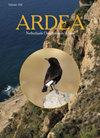必须有某种出路:“重塑”欧洲珊瑚礁渔业冲突
IF 1.3
4区 生物学
Q3 ORNITHOLOGY
引用次数: 4
摘要
欧洲最广泛、最持久的环境冲突之一涉及大珊瑚Phalacrocorax carbo。“大陆”中华鲟占欧洲繁殖种群的80%以上,其数量和地理分布在近几十年来急剧增加和扩大。因此,Cormorants越来越多地与欧洲各地的渔业利益发生冲突,因为许多人认为,这种鸟现在数量如此之多,导致鱼类捕获量下降,并对商业和娱乐渔业产生相关影响。因此,中欧的政策问题是如何应对:(1)大量的泛欧洲Cormorants种群,(2)经常在一些成员国繁殖,但在其他成员国越冬和捕食鱼类,(3)通常缺乏明确的科学证据表明捕食对渔业的影响,以及(4)越来越多的政治呼吁欧洲协调管理,而(5)许多人认为,一些人提倡的特定地点的地方/区域管理是无效的。本文利用几个泛欧研究和研究网络的案例和经验,描述了这个问题的复杂性和相关意见的多样性。关于Cormorants的大部分争议都是由意见分歧引发的,再加上其持久性和根深蒂固的性质,它具有所谓“棘手的环境冲突”的许多特征。因此,本文借鉴了为处理此类情况而提出的“重构”模型,并讨论了看待问题的各种“框架”。它还提出,未来的研究可能最好集中在似乎是冲突“热点”的特定渔业部门。在这方面,示范项目可能涉及重新规划,再加上在适应性管理框架内进行新的科学研究和实践实验——其中一个目标可能是扩大有效管理活动的范围和地理覆盖范围。本文章由计算机程序翻译,如有差异,请以英文原文为准。
There must be Some Kind of Way Out of Here: Towards ‘Reframing’ European Cormorant-Fisheries Conflicts
One of the most widespread and persistent environmental conflicts in Europe involves the Great Cormorant Phalacrocorax carbo. The ‘continental’ race P. c. sinensis comprises over 80% of the European breeding population and its numbers and geographical distribution have increased and expanded dramatically in recent decades. Consequently, Cormorants have increasingly come into conflict with fisheries interests across Europe, as many people believe that the birds are now so numerous that they cause declines in fish catches, with associated impacts on commercial and recreational fisheries. The Central European policy issue is thus how to deal with: (1) a large pan-European population of Cormorants, (2) very often breeding in some Member States but overwintering and preying upon fish in others, (3) where there is generally a lack of unequivocal scientific evidence for predation impact on fisheries and (4) where there are growing political calls for coordinated European management, whilst (5) many believe that the site-specific local/regional management advocated by some is ineffective. Using case examples and experiences from several pan-European studies and research networks, this paper describes the complexity of this issue and the diversity of associated opinions. Much of the controversy over Cormorants is fuelled by differences of opinion and, coupled with its persistence and entrenched nature, it has many of the characteristics of a so-called ‘intractable environmental conflict’. As such, this paper draws on a ‘reframing’ model proposed to deal with such situations and discusses the various ‘frames’ by which issues are viewed. It also proposes that future research might best focus on specific fisheries sectors that appear to be ‘hotspots’ for conflicts. Here, demonstration projects could involve a reframing exercise, coupled with new scientific research and practical experimentation within an adaptive management framework – one aim of which might be to increase the scope and geographical coverage of effective management activities.
求助全文
通过发布文献求助,成功后即可免费获取论文全文。
去求助
来源期刊

Ardea
生物-鸟类学
CiteScore
2.10
自引率
0.00%
发文量
49
审稿时长
>12 weeks
期刊介绍:
Ardea is the scientific journal of the Netherlands Ornithologists'' Union, and is published since 1912. The journal welcomes manuscripts reporting significant new findings in ornithology, in particular those covering the ecology, life history, and evolution of birds, and including sound descriptive work. Ardea publishes Original research papers, Short notes and Book reviews. In addition to the regular three issues per year, Ardea publishes specials that contain conference or workshop proceedings (produced on request).
 求助内容:
求助内容: 应助结果提醒方式:
应助结果提醒方式:


